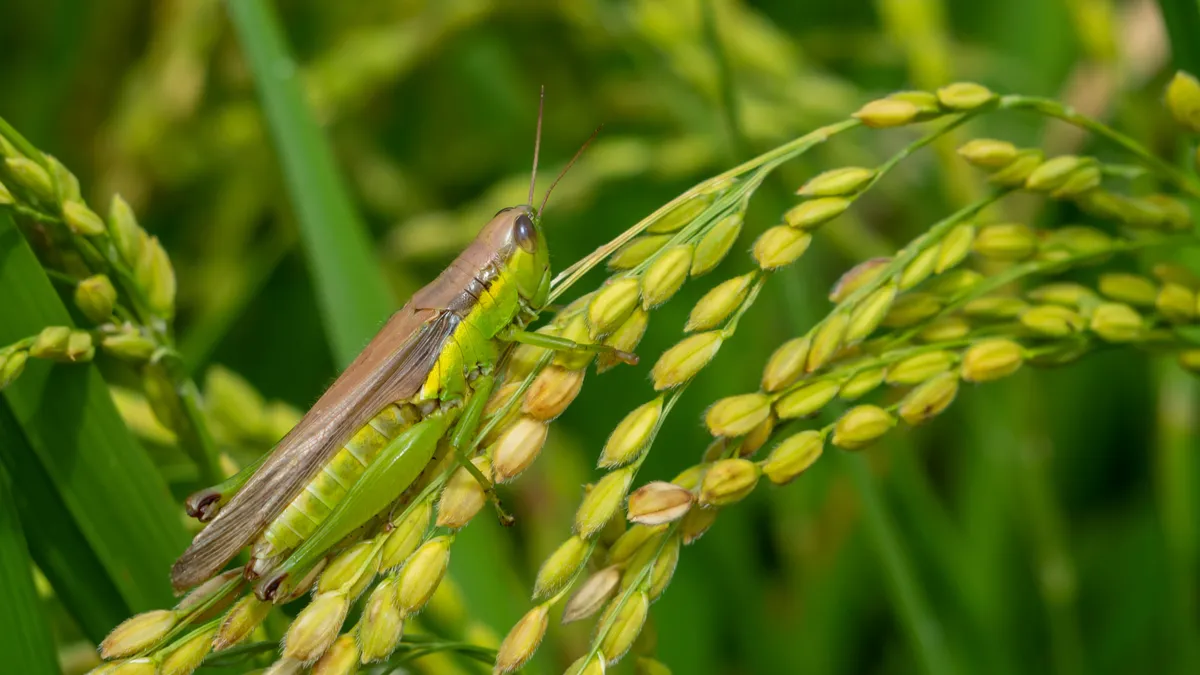Farmers in Western states are bracing for swarms of grasshoppers, crickets and other pests that could potentially devour their crops this summer.
Grasshoppers and Mormon crickets are spreading in at least seven Western states, according to a recent report from the Los Angeles Times. As drought dries the land, the pesky insects, which thrive in dry grasses, are moving into areas that had previously been untouched by them. Hundreds of farmers and ranchers lost their crops last year, resulting in millions of dollars in damage, according to the report.
Grasshoppers devoured the stalks on farmer Mike McKoen’s onion crops last year, leading to rot. He spent more than $100,000 to save his crop, he told the Times.
According to Rob Wilson, a University of California Cooperative Extension livestock and natural resource advisor, California’s drought and the curtailment of irrigation water available to agriculture has had the greatest impact on crop-damaging pests.
Reducing irrigated land reduces crop rotation opportunities, allows for more weeds to infest non-irrigated lands, and impacts pest migration, Wilson said. “We have observed this with grasshoppers and thrips,” he said.
Colorado has also seen an increase of the pests this summer.
“The impact of climate change on drought cycles and severe weather and its resulting impact of crop growth and pests is threatening,” Wilson said. “Is the increase in grasshoppers caused by climate change? I don’t know, but I have observed a shift in when pests such as weeds and insects appear in crops. For example, we have weeds germinating later in the fall and earlier in the spring due to warmer soil temperatures.”
Farmers in the hurricane-prone Caribbean must mitigate the impact of floods caused by storms that threaten crops with rot and water-borne pests. Officials in Jamaica issued a warning to farmers after recent Hurricane Beryl dropped heavy rains on the island nation. If fields are not drained properly, crops could be lost to pests.
“Climate change is significantly impacting crops and crop pests, creating challenges for farmers across the globe,” Dr. Emmanuel Attoh, a researcher and climate adaptation specialist with the International Water Management Institute, told Agriculture Dive in an interview.
In Bangladesh, more intense and frequent flooding due to heavy rainfall has damaged crops and eroded fertile soil, Attoh added.
For farmers around the world, overcoming changing weather patterns and fluctuating pest life cycles will be a challenge, according to Wilson.
“Farmers have limited opportunity to mitigate these threats as they can’t easily move their operations to new lands, they do not have control of when and how much surface irrigation water they receive, they lack alternative crops that are profitable, their costs are increasing at rapid rate preventing investment in research and new technologies, and they do not have control of land management on surrounding lands,” he said.
Swarms of these pests also impact beef and dairy production.
The bugs lay eggs in the fall that hatch by the following summer, and eat hay and grasses like alfalfa, commonly grown to feed cattle. As the grasshoppers proliferate and destroy feed, ranchers and dairy farmers are forced to reduce their herds.
“For 75 years we were always able to raise enough hay to feed the number of livestock we had,” Brian Ingraham, a fourth-generation cattle rancher in Modoc County, Calif., told the Los Angeles Times. “The last three or five years, we’ve had to purchase.” As a result he’s cut his herd from 150 mother cows to 100.
The state of Oregon earmarked $1.2 million for grasshopper mitigation through Senate Bill 5701 during the last legislative session. In 2022, the Oregon Capitol Chronicle reported the state set aside $5 million in grants to reimburse producers for the cost of spraying the insects.










